Synopsis
Nutrients are compounds that are essential for life and involve in metabolic activities. Animal nutrition is concerned with the methods and types of food intake by different organisms.
The basic two modes of nutrition are autotrophic and heterotrophic. Autotrophic is in plants and algae which prepare their food by utilizing inorganic nutrients and converting them into organic food.
Heterotrophic is in animals. Animals obtain food by different methods depending on the type of organisms. Some are feeders, some have an absorptive nature. Higher animals including humans have well-developed digestive systems.
These types of organisms use methods such as ingestion, digestion, assimilation, and then egestion.
- 1) Methods of Animal Nutrition
- 2) Detritivores:
- 3) Herbivores:
- 4) Carnivores:
- 5) Omnivores:
- 6) Filter feeders:
- 7) Fluid feeders:
- 8) Macrophagous feeders:
- 9) Parasitic Nutrition
- 10) MCQs with Answers: Methods of Animal Nutrition
- 11) FAQs: Methods of Animal Nutrition
- 12) Summary: Methods of Animal Nutrition
- 13) You may also like to learn:
Methods of Animal Nutrition
In large animals, every cell of the body requires nutrition, yet most cells cannot leave their position in the body and travel to a food source, so the food must be delivered. The digestive system supplies the body with water, electrolytes, and other nutrients.
To do this, the digestive system is specialized to ingest food; propel it through the gastrointestinal tract; absorb the food, and take in water; electrolytes, and other nutrients from the lumen of the digestion tract. Undigested matter from the food is moved out of the digestion system.
Animals exhibit more range of nutrition as compared to plants. On the basis of nutrition, animals might be classified as:
Detritivores:
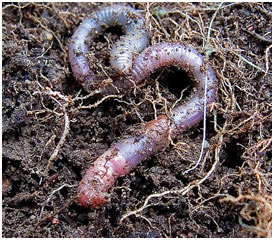
The animals which eat sediment or detritus (organic debris from breaking down plants and animals) are called detritivores. The earthworm is a common example of a detritus feeder. It ingests pieces of rotting raw material specifically plants either at the soil surface or throughout the burrowing activity.
Herbivores:
Animals that eat plants are called herbivores. Typical herbivores consist of insects, reptiles, birds, and mammals. Two important groups of herbivorous mammals are rodents and ungulates. The later are hoofed grazing animals, such as horses, livestock, and sheep.
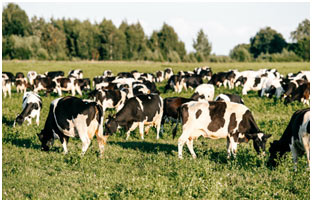
In herbivorous mammals, the premolars and molars have large grinding surfaces. There is a large gap between the incisors and premolars. Canines are missing out on. In grazing and browsing herbivores, i.e., deer and sheep, there are no upper incisors.
Carnivores:
Animals that eat other animals are called carnivores. They have large canine teeth for capturing and tearing the prey. Incisors, premolars, and molars are all adapted for cutting flesh, cracking bones, and decreasing the portions to sizes appropriate for swallowing. Cats, dogs, lions, and tigers are common examples of predators. A predator is an animal, which catches and easily kills a live animal for its food. The animal, which is eaten, is the prey.
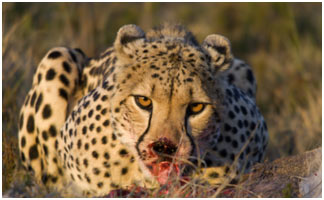
The predator-prey interaction assists in preserving the environment’s stability. A species in a location without its natural predator leads to dreadful outcomes. The introduction of rabbits into Australia without the predator increased to a huge number and proved a threat to the farmers.
Omnivores:
These are the animals that eat both plant and animal food. Examples of omnivores are crows, rats, red fox, bears, pigs, and humans. They have the teeth structurally and functionally intermediate in between the extremes of expertise achieved by the teeth of herbivores and carnivores.
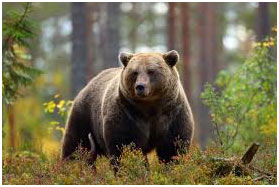
Filter feeders:
Lots of water animals filter the water and digest the particles that they extract from it. A typical mussel possesses 2 large gills covered with cilia. The movement of cilia causes a current of water to get into animals by means of an inhalant siphon. The water, which enters, consists of food, such as microscopic algae and protozoa. Secretory cells scattered amongst cilia produce sticky mucous which entangles food particles.
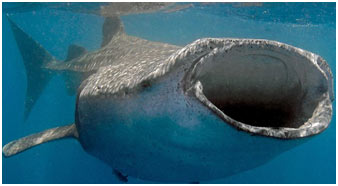
The trapped food particles are then swept towards the mouth by the ciliary motion. Particular species of whales are likewise filter feeders.
Fluid feeders:
When the food is consumed in liquid form the animals are classed as fluid feeders. Aphids and mosquitoes are examples. Aphids draw the phloem juices out of the green stems by placing their delicate styles.
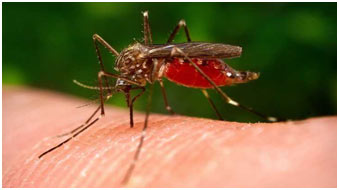
The female mosquito is also a fluid feeder since it draws blood from the skin capillaries by piercing the skin with the help of tubular mouthparts.
Macrophagous feeders:
Animals, which take in food in the form of large pieces, are macrophagous feeders. Tentacular feeding, scraping, and seizing prey are the typical methods of macrophagous feeding. Feeding in Hydra is an example of tentacular feeding. The scraping type of feeding occurs in the garden snail (Helix). It feeds by using a rasping organ, the radula. Leaves are held by the lips of the snail.
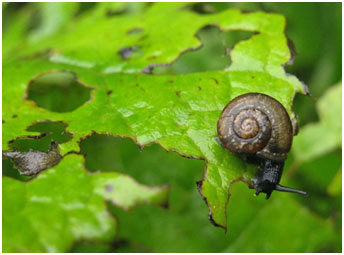
The radula returns and forth over the leaves with its teeth scraping the food. In this way, tiny pieces of leaves are gotten which are slowly pressed back towards the pharynx. Seizing and swallowing kind of macrophagous feeding is found in spotted doggish.
Parasitic Nutrition
A parasite is an organism that lives upon or within another organism, called the host, for acquiring its food. A parasite that lives upon the host is an ectoparasite and that which lives within the host is an endoparasite. If an organism lives parasitically at all times, it is stated to be an obligate parasite. Facultative parasites can live individually of their host sometimes.
Flea and lice are ectoparasites that reside in the fur or feathers of mammals and birds and draw blood from their skin. Ticks and mites are common ectoparasites in non-human mammals. In plants, the aphid is a parasite that sucks food from leaves or stems. Leech is another typical example of ectoparasite attacking both aquatic and terrestrial animals.
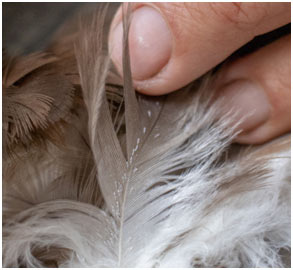
Endoparasites also occur in both marine and terrestrial animals. These parasites are most typically found in the intestine of vertebrate host, also consisting of man, where they take in the host’s digested food. Entamoeba histolytica, tapeworm, and roundworms prevail as examples of endoparasites. In certain cases, the host may be compromised by the existence of the parasite or its metabolism may be distressed by the excretory products of the parasite.
MCQs with Answers: Methods of Animal Nutrition
- What is the primary focus of animal nutrition?
- a) Production of energy
- b) Synthesis of amino acids
- c) Metabolic activities
- d) Development of organs
Answer: c) Metabolic activities
- Which of the following modes of nutrition is found in animals?
- a) Autotrophic
- b) Heterotrophic
- c) Mixotrophic
- d) Phototrophic
Answer: b) Heterotrophic
- What is the function of the digestive system in animals?
- a) Synthesizing nutrients
- b) Absorbing sunlight
- c) Supplying water and electrolytes
- d) Regulating body temperature
Answer: c) Supplying water and electrolytes
- What are the stages involved in the methods of animal nutrition?
- a) Absorption, Respiration, Excretion
- b) Ingestion, Digestion, Assimilation, Egestion
- c) Photosynthesis, Transpiration, Reproduction
- d) Osmoregulation, Circulation, Locomotion
Answer: b) Ingestion, Digestion, Assimilation, Egestion
- Which category of animals is referred to as detritivores?
- a) Herbivores
- b) Carnivores
- c) Fluid feeders
- d) Feeders on organic debris
Answer: d) Feeders on organic debris
- What is the characteristic feature of herbivorous mammals?
- a) Large canine teeth
- b) Well-developed claws
- c) Hoofed grazing animals
- d) Carnivorous dentition
Answer: c) Hoofed grazing animals
- Which adaptation is common in carnivores for capturing and tearing prey?
- a) Large grinding surfaces
- b) Absence of canines
- c) Large canine teeth
- d) Herbivorous dentition
Answer: c) Large canine teeth
- Examples of omnivores include:
- a) Lions, Tigers
- b) Crows, Rats
- c) Horses, Cattle
- d) Aphids, Mosquitoes
Answer: b) Crows, Rats
- What is the feeding method of filter feeders?
- a) Seizing and swallowing
- b) Tentacular feeding
- c) Rasp feeding
- d) Fluid feeding
Answer: b) Tentacular feeding
- Aphids and mosquitoes are classified as:
- a) Detritivores
- b) Filter feeders
- c) Fluid feeders
- d) Macrophagous feeders
Answer: c) Fluid feeders
- What characterizes macrophagous feeders?
- a) Feeding in liquid form
- b) Feeding on small particles
- c) Feeding on large pieces
- d) Filter feeding
Answer: c) Feeding on large pieces
- What defines parasitic nutrition?
- a) Ingesting detritus
- b) Consuming plants
- c) Living on or within another organism for food
- d) Herbivorous diet
Answer: c) Living on or within another organism for food
- Which of the following is an example of an ectoparasite?
- a) Tapeworm
- b) Leech
- c) Flea
- d) Roundworm
Answer: c) Flea
- What is the function of ticks and mites in the animal kingdom?
- a) Filter feeding
- b) Fluid feeding
- c) Herbivorous feeding
- d) Ectoparasitic feeding
Answer: d) Ectoparasitic feeding
- Which of the following is an endoparasite found in the intestine of vertebrate hosts?
- a) Leech
- b) Entamoeba histolytica
- c) Flea
- d) Mosquito
Answer: b) Entamoeba histolytica
- What distinguishes facultative parasites from obligate parasites?
- a) Mode of feeding
- b) Host dependence
- c) Size of parasites
- d) Location in the host
Answer: b) Host dependence
- In parasitic nutrition, what role do ectoparasites play?
- a) Attack the host externally
- b) Live within the host’s intestine
- c) Suck nutrients from leaves
- d) Engage in filter feeding
Answer: a) Attack the host externally
- What is the primary impact of parasites on their hosts?
- a) Enhance host metabolism
- b) Disturb host’s metabolism
- c) Provide nutrients to the host
- d) Improve host’s reproductive capacity
Answer: b) Disturb host’s metabolism
- Which category of parasites can live independently of their host at times?
- a) Ectoparasites
- b) Endoparasites
- c) Facultative parasites
- d) Obligate parasites
Answer: c) Facultative parasites
- What is the feeding method of leech, an example of an ectoparasite?
- a) Tentacular feeding
- b) Rasp feeding
- c) Fluid feeding
- d) Macrophagous feeding
Answer: c) Fluid feeding
- What is the role of the radula in the macrophagous feeding of garden snails?
- a) Tentacular feeding
- b) Rasp feeding
- c) Fluid feeding
- d) Filter feeding
Answer: b) Rasp feeding
FAQs: Methods of Animal Nutrition
- What is the focus of animal nutrition?
- Animal nutrition is concerned with the methods and types of food intake by different organisms.
- What are the two basic modes of nutrition?
- The basic modes are autotrophic (plants and algae) and heterotrophic (animals).
- How do animals obtain food in heterotrophic nutrition?
- Animals obtain food through various methods such as ingestion, digestion, assimilation, and egestion.
- What is the role of the digestive system in large animals?
- The digestive system delivers water, electrolytes, and nutrients to every cell of the body.
- How is animal nutrition classified based on feeding habits?
- Animals are classified into detritivores, herbivores, carnivores, omnivores, filter feeders, fluid feeders, and macrophagous feeders.
- What are detritivores, and can you provide an example?
- Detritivores are animals that eat sediment or detritus. An example is the earthworm.
- Name some typical herbivores and their characteristics.
- Herbivores include insects, reptiles, birds, and mammals. Ungulates, like horses and sheep, are examples with large grinding surfaces in premolars and molars.
- What are carnivores, and how are their teeth adapted for their diet?
- Carnivores are animals that eat other animals. They have large canine teeth for capturing and tearing prey.
- Give examples of omnivores and their feeding characteristics.
- Examples are crows, rats, red fox, bears, pigs, and humans. They have teeth intermediate between herbivores and carnivores.
- Explain the feeding method of filter feeders with an example.
- Filter feeders filter water to extract particles. A mussel, with gills and cilia, traps microscopic algae and protozoa.
- What defines fluid feeders, and provide examples.
- Fluid feeders consume food in liquid form. Examples include aphids drawing phloem juices and female mosquitoes feeding on blood.
- Describe macrophagous feeders and give examples of their feeding methods.
- Macrophagous feeders consume large pieces of food. Examples include tentacular feeding in Hydra and scraping with a radula in garden snails.
- Define parasitic nutrition and provide examples.
- Parasitic nutrition involves an organism living on or within another organism for food. Examples include fleas, lice, ticks, mites, and endoparasites like tapeworms.
- Differentiate between ectoparasites and endoparasites.
- Ectoparasites live on the host’s exterior, while endoparasites live within the host’s body.
- What distinguishes obligate parasites from facultative parasites?
- Obligate parasites live parasitically at all times, while facultative parasites can live independently of their host sometimes.
Summary: Methods of Animal Nutrition
This comprehensive tutorial on animal nutrition explores the diverse methods and types of food intake by different organisms. It begins by distinguishing between autotrophic nutrition in plants and algae and heterotrophic nutrition in animals. The latter, including higher animals like humans, involves various processes such as ingestion, digestion, assimilation, and egestion.
The tutorial categorizes animals based on their feeding habits, covering detritivores, herbivores, carnivores, omnivores, filter feeders, fluid feeders, and macrophagous feeders. Each category is defined, providing examples and insights into their unique dietary characteristics. Detritivores, like earthworms, consume organic debris, while herbivores, such as ungulates, specialize in plant consumption with distinct dental adaptations.
Carnivores, exemplified by predators like lions and tigers, showcase adaptations for capturing and consuming other animals. Omnivores, including humans, exhibit a balanced diet by consuming both plant and animal food. Filter feeders, fluid feeders, and macrophagous feeders each have their distinctive methods of obtaining nutrition, involving filtering water, consuming liquid food, and ingesting large pieces, respectively.
The tutorial concludes with a discussion on parasitic nutrition, where organisms live on or within other organisms to acquire their food. Ectoparasites, like fleas and lice, reside externally, while endoparasites, such as tapeworms, inhabit the host’s internal organs. The summary encapsulates the richness of animal nutrition, showcasing the incredible diversity in feeding strategies and dietary adaptations across the animal kingdom.
